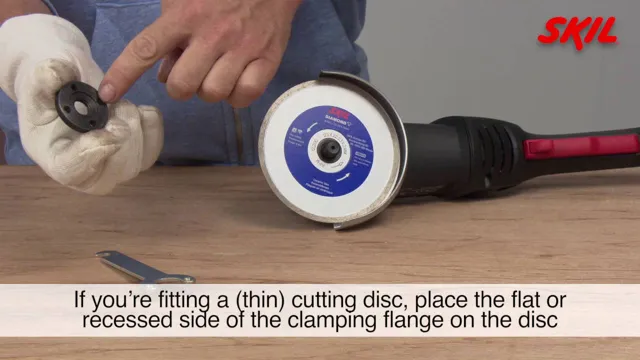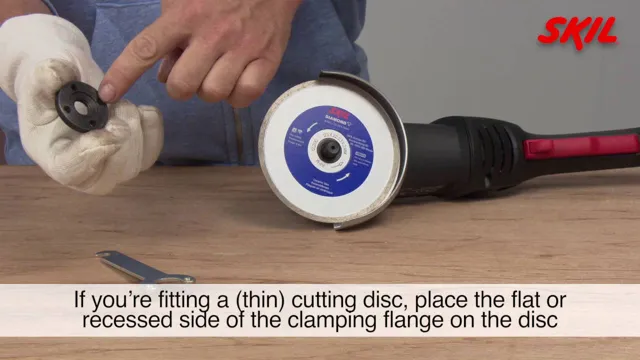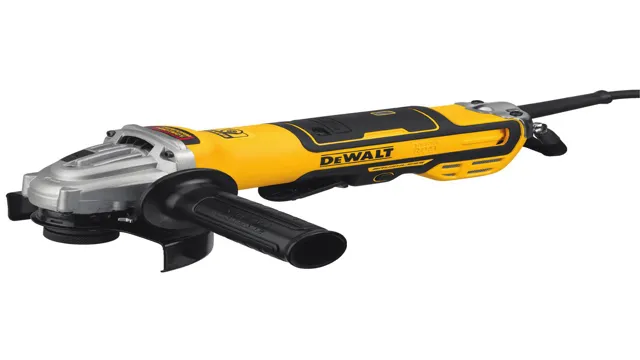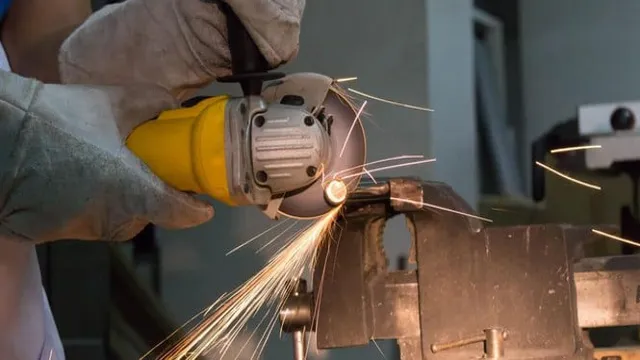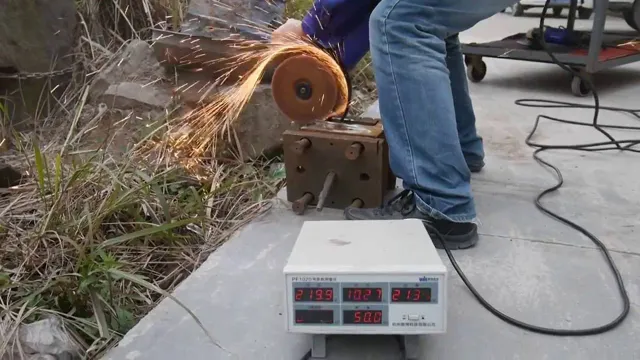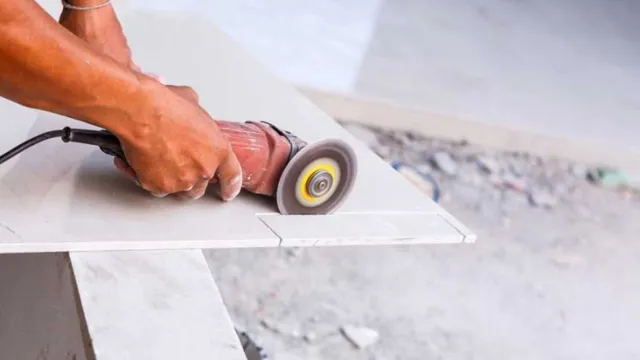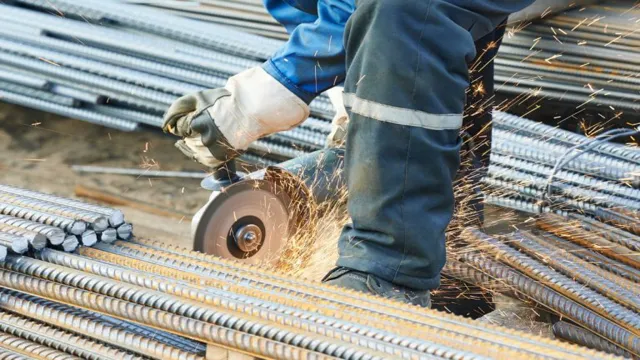How to Stop Dust from Angle Grinder: A Comprehensive Guide to Safe Grinding Practices
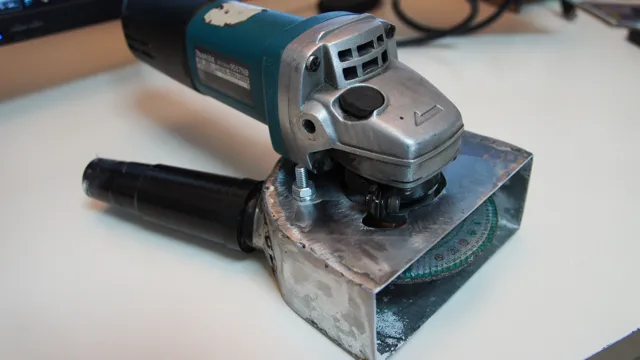
If you have ever used an angle grinder, you know how frustrating it can be to deal with the aftermath of dust and debris left behind. Not only is it unpleasant to clean up, but it can also pose a health risk if inhaled. Fortunately, there are several ways to prevent dust from an angle grinder from becoming a nuisance.
From using water to investing in a dust collection system, there are various options to choose from. In this blog post, we will explore some of the top ways to combat dust while using an angle grinder and keep your workspace clean and healthy. So, whether you use an angle grinder for DIY projects or professional work, read on to learn how you can protect yourself and your surroundings from the harmful effects of dust.
Understanding the Problem
If you’re tired of having to deal with the dust that an angle grinder tends to produce, there are a few ways that you can help reduce the amount of dust that’s flying around. One of the best ways to start is by using a dust shroud. This is a cover that fits over the grinder, which helps to trap the dust before it can escape into the air.
Another option is to use a concrete vac. This is a vacuum that attaches to your grinder and sucks up the dust as you work. Finally, consider using a dust mask to stop the dust from getting into your lungs.
All in all, there are several ways to reduce dust when using an angle grinder, so choose the method that works best for you and help protect your health and the environment.
Why Dust is a Hazard
Dust may seem like a trivial inconvenience, but it can actually pose a significant hazard to our health and wellbeing. By definition, dust is made up of fine particles that can easily become airborne and enter our respiratory system. This makes it particularly dangerous for those with allergies or respiratory conditions like asthma.
Additionally, dust can also contain harmful substances like chemicals, mold spores, and even lead particles from old paint. Exposure to these substances can lead to a range of health problems, from minor respiratory irritation to serious illnesses like lung cancer. It’s important to take steps to minimize dust in our homes and workplaces, like regularly cleaning and dusting surfaces, using air purifiers and ventilation systems, and wearing protective masks when dealing with particularly dusty environments.
By understanding the hazards of dust and taking proactive measures to reduce exposure, we can help protect ourselves and those around us from potential harm.
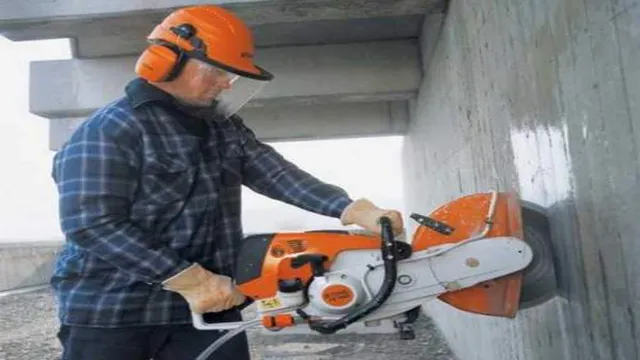
Common Causes of Dust
Dust is a common problem that plagues many households, causing discomfort and a variety of unhealthy consequences. Understanding the causes of dust is the first step in combating this issue. One of the most common causes of dust is simply everyday activities such as walking, vacuuming, and even pet grooming.
Other causes include dirty air ducts, poor ventilation, and outdated air filters that do not effectively trap dust particles. Outdoor factors such as pollen, pollution, and even nearby construction sites can also contribute to an increase in indoor dust. It’s important to maintain a clean living environment and regularly maintain air filtration systems to minimize the amount of dust and harmful particles in the air.
By staying on top of these factors, you can greatly reduce the amount of dust that accumulates in your home and improve the overall quality of your indoor air.
Ways to Reduce Dust
Do you ever find yourself covered in dust after using an angle grinder? Fear not, as there are ways to reduce the amount of dust created during your grinding activities. One of the best ways to start is by using a dust collector attachment for your angle grinder. This device uses suction to collect the dust as you work, minimizing the amount that gets released into the air.
Another option is to use a wet grinding method, which involves adding water to the grinder to reduce dust. If you don’t have a dust collector or access to water, wearing a dust mask is essential to protect your lungs from the harmful particles. So next time you’re using your angle grinder, try out these tips to keep the dust and debris under control.
Use of Dust Shroud
A dust shroud is an essential tool for reducing dust while working with power tools. By attaching a dust shroud to your power tools, you will be able to capture a significant amount of dust before it becomes airborne. The primary function of a dust shroud is to contain the dust and debris produced by power tools like grinders, sanders, and saws, ensuring a safer and cleaner working environment.
There are several ways to reduce dust, but using a dust shroud is the best method, as it can capture up to 95% of the dust produced. Because of its effectiveness, many construction sites, workshops, and factories require the use of dust shrouds to comply with environmental regulations. So, if you want to keep your work area clean and healthy, investing in a dust shroud is the way to go.
Wet Grinding Technique
When it comes to wet grinding techniques, dust can be a major issue. Not only is dust annoying and messy, but it can also be hazardous to your health if inhaled. Luckily, there are ways to minimize dust and ensure a cleaner, safer work environment.
One effective way is to use a dust shroud or vacuum attachment when grinding to capture dust at the source. Another option is to make sure the work area is well-ventilated and to wear appropriate personal protective equipment, such as a respirator or dust mask. Additionally, using the proper grinding tools and techniques can help reduce dust, such as using a wet grinding method rather than dry grinding.
By implementing these practices, you can accomplish your grinding tasks with reduced dust and increased safety.
Personal Protective Equipment
When working in an environment with high dust levels, it is important to take the necessary precautions to protect yourself. Personal Protective Equipment (PPE) is crucial in preventing exposure to harmful dust particles. The use of respirators, gloves, and safety glasses can help reduce the amount of dust that you breathe in.
Additionally, it is important to regularly clean and maintain your equipment, as well as to avoid touching your face while working. But PPE alone is not enough to completely eliminate dust exposure. It is also important to address the source of the dust itself.
Some ways to reduce dust levels include using damp cloths or mops to clean surfaces, regularly changing air filters in ventilation systems, and using dust collection systems in areas where dust is created. Taking these additional measures in conjunction with proper PPE can greatly reduce your risk of respiratory issues and other health problems associated with dust exposure.
Maintenance Tips
If you’re looking for ways to prevent dust from accumulating while using an angle grinder, there are a few simple steps you can take. First and foremost, always use a dust shroud or cover for your grinder when working. This will help to contain the dust and prevent it from spreading all over your work area.
Additionally, using a wet/dry vacuum with a HEPA filter can help to further reduce dust and debris. Another important tip is to wear an appropriate dust mask or respirator while working, as inhaling the dust from your grinding can be harmful to your health. Lastly, be sure to regularly clean and maintain your angle grinder, including replacing worn out parts and lubricating any moving components.
By following these tips, you can help to minimize the amount of dust generated by your angle grinder and create a safer, cleaner work environment.
Cleaning the Grinder After Use
Maintaining your coffee grinder is crucial to ensure that it continues to produce high-quality coffee grounds that provide you with the rich and flavorful coffee you crave. One often overlooked aspect of grinder maintenance is cleaning. After each use, it’s important to clean your grinder to keep it in top condition.
Start by unplugging the grinder from the wall outlet and removing any leftover coffee grounds that may be in the hopper. Next, use a soft brush or cloth to wipe down the exterior and interior of the grinder, paying close attention to the burrs and grind chamber. Finally, use a damp cloth to wipe down the hopper and any other removable parts that came in contact with coffee grounds.
By taking a few extra minutes after each use to clean your grinder, you’ll ensure its longevity and the consistent quality of your coffee.
Replacing Worn Out Parts
When it comes to keeping your appliances running smoothly, routine maintenance is key. One important aspect of maintenance is replacing worn out parts. Over time, parts such as belts, hoses, and filters can become worn or damaged, leading to reduced efficiency or even breakdowns.
It’s important to regularly inspect these parts and replace them as needed to ensure optimal performance. While it may seem like an inconvenience to replace these parts, it can actually save you time and money in the long run. Think of it like changing the oil in your car – it may seem like a hassle, but it’s essential for keeping your vehicle running smoothly.
When searching for replacement parts, be sure to use the manufacturer’s recommended parts to ensure proper fit and function. By staying on top of routine maintenance and replacing worn out parts, you can keep your appliances running like new for years to come.
Conclusion
In summary, preventing dust from an angle grinder requires a combination of preventive measures and proper tools. By using a dust extraction system, selecting the right blade for the job, and wearing personal protective equipment, you can minimize the amount of dust generated and keep your work area clean. So don’t let dust spoil your workshop or job site – take control of your angle grinder and keep the air clear!”
FAQs
What causes dust while using an angle grinder?
Dust is caused by the friction between the abrasive disc and the workpiece while using an angle grinder.
How can I prevent dust from an angle grinder from spreading throughout my workspace?
One way to prevent the spread of dust is by using a dust collection system or attaching a dust shroud to the angle grinder.
Is it necessary to wear a dust mask while using an angle grinder?
Yes, it is essential to wear a dust mask to protect yourself from inhaling harmful dust particles while using an angle grinder.
What type of dust masks are recommended for use while using an angle grinder?
N95 or higher rated dust masks are recommended as they can filter out small dust particles efficiently.
Can water be used to control dust while using an angle grinder?
Yes, water can be used to control dust, but it is only applicable for specific materials, and the angle grinder must have a water attachment.
What are the benefits of using a dust shroud with an angle grinder?
A dust shroud will significantly reduce the amount of dust generated, protect the user from inhalation of harmful particles, and keep the workspace clean.
How often should I clean the dust collection system or dust shroud?
It is recommended to clean them after every use to maintain their efficiency in controlling dust and preventing blockages.

